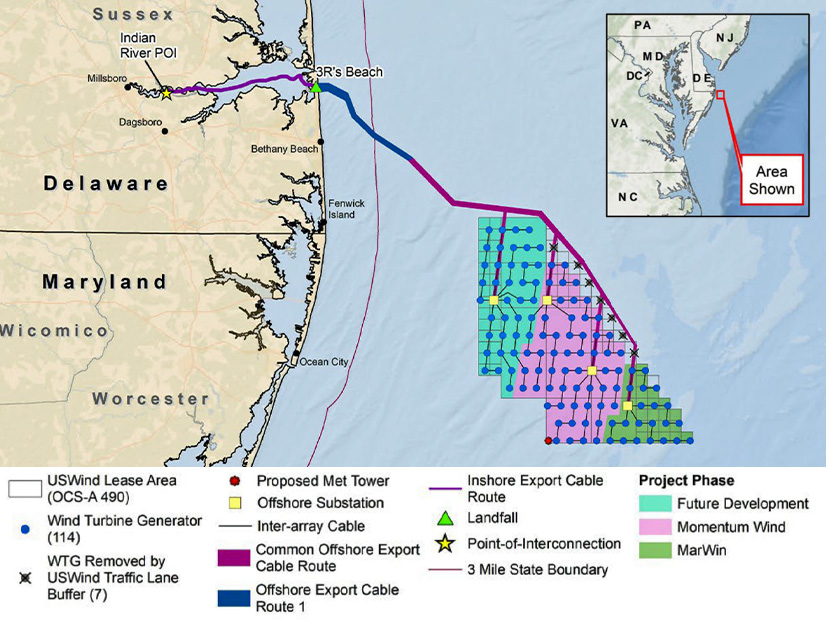Federal regulators have completed their environmental review of a Maryland offshore wind plan, moving the potential 2.2-GW project one step closer to final approval.
The Bureau of Ocean Energy Management will publish the draft environmental impact statement on US Wind’s proposal in the Federal Register on Oct. 6, starting a 45-day public comment period.
The comments will be considered as BOEM prepares the final environmental impact statement, which typically has been followed closely by the decision on whether to approve construction and operation.
Lease Area OCS-A 490 was awarded in 2014 to US Wind, which is owned by Lenexa S.p.A., a subsidiary of Toto Holding S.p.A. and Apollo Global Management. The 46,970-acre lease area is near the Delaware-Maryland border on the Delmarva peninsula.
US Wind proposes to install up to 114 wind turbines with up to 2.2 GW of combined nameplate capacity as close as 10 miles offshore, with export cables making landfall and interconnection in Delaware.
The company thus far has proposed two phases — the 300 MW MarWin and the 808 MW Momentum Wind — and secured offshore renewable energy certificates for both from Maryland. It also plans to create an offshore wind component factory at a former steel mill near Baltimore.
“This is the most significant step forward in the history of Maryland offshore wind,” US Wind CEO Jeff Grybowski said in a news release Friday. “BOEM’s draft environmental impact statement sets us on a path toward starting construction on our offshore wind projects in 2025, putting Maryland’s goals that much closer to reality. We are proud to be the first to deliver this clean energy to Delmarva and look forward to the day we can get steel in the water.”
The draft EIS for the Maryland Offshore Wind Project is similar to others BOEM has prepared for the profusion of offshore wind farms proposed off the Northeast coast — it presents a range of possible adverse and beneficial effects that construction and operation could have.
As with the other studies, the Maryland draft EIS predicts an adverse impact on the fishing industry, the critically endangered North Atlantic right whale and scientific research.
The adverse impact could be major once the cumulative effects of all the other proposed wind farms are factored in. A major adverse visual impact also is predicted.
Minor to moderate beneficial impacts also are predicted in the draft EIS. Seals and toothed whales, for example, might have better feeding conditions near the turbine tower foundations. Air quality might improve to some degree, and birds might derive minor benefit from improved foraging opportunities.
Sea turtles likely would suffer moderate negative effects but recover completely once the factors causing those effects cease.
The draft EIS and its appendices are available on BOEM’s website.


